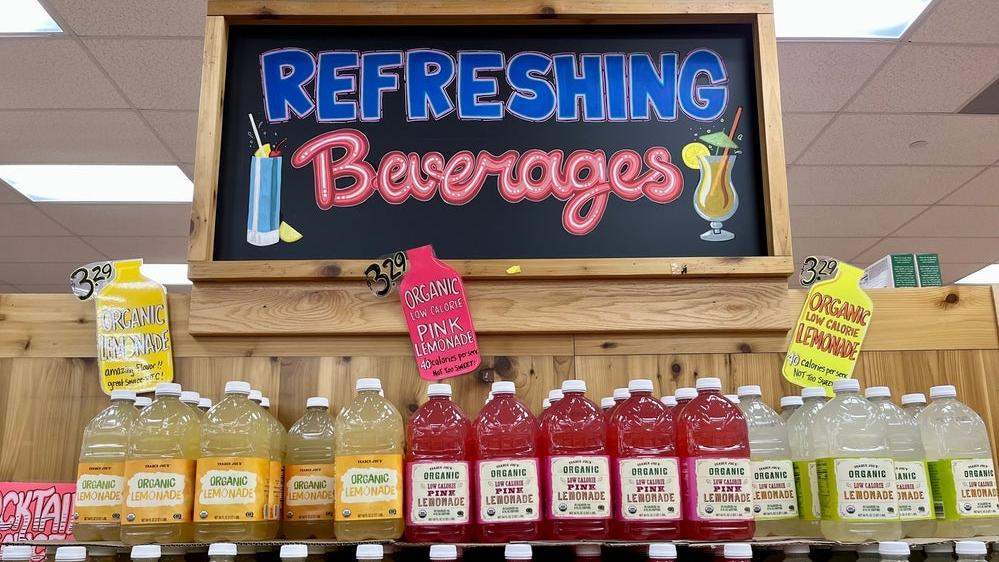Why You Can't Buy Trader Joe's Products Online
Everyone's favorite grocery chain stays low-tech for reason.
At a time when it seems as though every facet of the food industry is taking on tech advancements, it's a rarity to find a brand as steadfast in its decision to avoid ecommerce as Trader Joe's.
The rise of tech-forward solutions like online ordering, grocery delivery, curbside pickup, smart shopping carts, and loyalty apps are all changing the way we grocery shop on a daily basis, and industry analysts predict online grocery sales will increase by 12% yearly for the next four years. Yet Trader Joe's has shunned every single one of those grocery innovations, and not just because it hasn't caught up to the rest of America's supermarket chains yet.
Business Insider reports that Trader Joe's has more than 530 stores across the U.S., approximately 17,000 employees, and around $16.5 billion in yearly sales. But what's the secret? Well there isn't one. Trader Joe's is quite upfront with its business strategy. In fact, the brand's leadership often gives TJ's fans a peek behind the curtain via its branded podcast, Inside Trader Joe's.
Trader Joe’s won’t let you do any online shopping
During the height of the pandemic, online grocery shopping, coupled with the added convenience of delivery and pickup options, became the safest option for many consumers. However, Trader Joe's found its own way to serve these customers.
At the time, the chain chose to play to its own strengths, and continues to do so: Trader's Joe's is known for the friendly environment and service it provides in-store, as well as its unique selection of products. Its stores are often filled with house-brand items as well as other unique, non-name-brand offerings at fairly low prices. Wandering the aisles and perusing the shelves is all part of the experience for those who love the chain the most.
On the practical side, the brand's vice president of marketing, Matt Sloan, has previously noted on the podcast that implementing a delivery or pickup system would simply be "a massive undertaking." Doing so would add cost for the company, and it would require Trader Joe's to pull resources from other high-performing aspects of its operation.
It's for similar reasons that Trader Joe's also doesn't offer a loyalty program, though many other grocers have begun to roll them out. Tara Miller, a VP of Marketing for the brand, discussed with Sloan in a previous podcast episode why it won't offer even its most loyal customers a rewards program. Miller explains that most often when grocers offer discounts to loyalty members, it's the company that absorbs the price difference. This is done to spur more purchases of that particular product, thus making up for any potential loss.
"It costs money and takes lots of time and resources to track all your purchases, to give you a coupon targeted to your interest, to provide a deal that was paid for through a collection of the manufacturers, and maybe even that customer's own money," Sloan says on the podcast. "We're interested in removing costs."
On top of cost, there's the issue of brand image, and Trader Joe's certainly isn't trying to mess with its own. When it comes to online shopping, consumers tend to browse with specific products already in mind, whereas the experience in-store at Trader Joe's is meant to be more like a "treasure hunt," Miller explains on the podcast. Fair point—walking the aisles of grocery stores does tend to yield a larger cart filled with items not on my official list, and shoppers are always warned about not grocery shopping while hungry.
"Anything different from that, we're neither set up to do, we're not really interested in, we won't be good and, it would only just add cost," Sloan said.
The bottom line here is that Trader Joe's knows itself. The chain's leadership knows what works and what sets it apart from other grocery shopping experiences. You gotta respect that.
